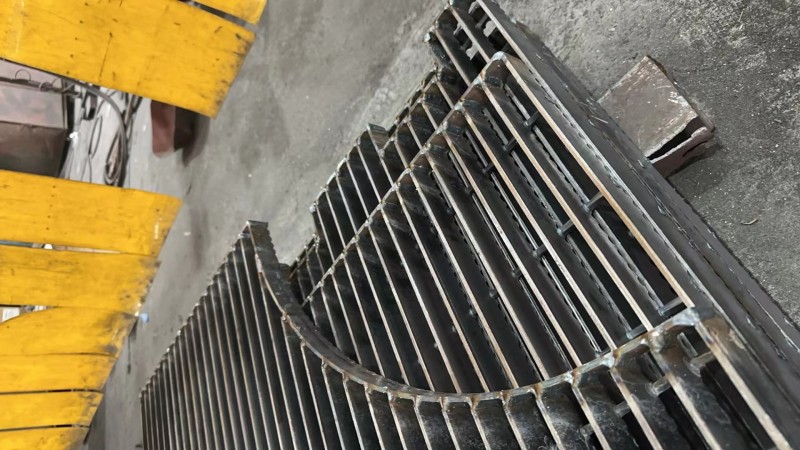During the production and installation of steel grating plates, the welding quality directly determines its bearing capacity and service life. However, in actual applications, many engineering projects will encounter the problem of welding cracking of steel grating plates. What exactly causes weld cracking? How do single-sided welding and double-sided welding processes affect the welding quality of steel grating plates? This article will explain in detail how to avoid welding cracking of steel grating plates to ensure construction safety and service life.


During the construction process, welding cracking of steel grating plates is usually caused by the following factors:
1. Excessive welding stress
During the welding process, the steel grating plate expands due to heat and contracts due to cooling, resulting in large internal stress in the weld. When the internal stress exceeds the material's tolerance range, cracking will occur.
2. The welding material does not match the material of the steel grating plate
If the strength, ductility, and thermal expansion coefficient of the welding material do not match the steel grating plate, cracks may occur after welding. Especially for steel grating plates used in harsh environments, improper material selection will accelerate welding failure.
3. Improper welding process control
Welding current is too large or too small, welding speed is uneven, and weld filling is insufficient, which will lead to reduced weld quality and increase the risk of cracking.
4. Environmental factors
Steel grating plates are prone to cracking after long-term use in humid, corrosive or drastic temperature changes if the welds are not treated with anti-corrosion.

1. Single-sided welding process analysis
Advantages:
✔ Simple construction, fast welding speed, suitable for mass production.
✔ Suitable for light-load steel grating plates, such as walkways, guardrails, etc.
Disadvantages:
✘ The weld is only on one side, with weak tensile and shear resistance, and is prone to cracking due to external forces.
✘ Suitable for occasions with low load requirements, not suitable for high-intensity impact environments.
2. Analysis of double-sided welding process
Advantages:
✔ Strong welding, more uniform force, and stronger weld crack resistance.
✔ Suitable for large-span, high-load steel gratings, such as industrial platforms, offshore platforms, etc.
✔ Improve durability and reduce the risk of cracking caused by long-term vibration or temperature changes.
Disadvantages:
✘ High construction cost and long welding time.
✘ High requirements for welding process, requiring skilled welders to operate.
Conclusion: If the project requires high-strength crack resistance, it is recommended to choose double-sided welding process.
In order to ensure welding quality and reduce the risk of weld cracking, you can start from the following aspects:
1. Choose suitable welding materials
Choose welding rods or welding wires that match the material of the steel grating to avoid weld brittle cracking due to material incompatibility.
For steel gratings that are in a corrosive environment for a long time, corrosion-resistant welding materials such as stainless steel welding wire can be selected.
2. Use reasonable welding technology
Control welding current and speed: ensure that the weld is fully melted and avoid weld defects.
Choose a suitable welding method: For steel gratings with high load requirements, double-sided welding is recommended.
Avoid continuous welding: Segmented welding can effectively reduce welding stress and reduce the risk of cracking.
3. Perform weld heat treatment
After welding, weld heat treatment (such as tempering) can be performed to reduce welding stress and improve crack resistance.
4. Strengthen anti-corrosion treatment
After welding, hot-dip galvanizing or coating protection of the weld area can effectively prevent crack expansion caused by corrosion.
5. Regular inspection and maintenance
Regularly check the weld status, and repair small cracks in time to avoid expansion and affect structural safety.
